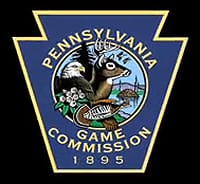Fall Firearms Deer Seasons Making A Difference

HARRISBURG, PA –-(Ammoland.com)- The state’s early firearms antlerless deer seasons – early muzzleloader season, Oct. 16-23, and special firearms season for junior, senior, active duty military and certain disabled hunters, Oct. 21-23 – will soon be here, along with seasons for squirrels and grouse, so there will be plenty of hunting opportunities across the state, according to Carl G. Roe, Pennsylvania Game Commission executive director.
Roe noted that these early antlerless deer seasons provide hunters more ways to fit deer hunting into their busy schedules, and offer a more relaxing hunt to those who prefer warmer weather and fewer hunters in the woods.
“Although the October antlerless seasons increase hunting opportunities, their harvests still are controlled by antlerless deer license allocations, which are set to remove a pre-determined number of antlerless deer from a Wildlife Management Unit (WMU),” Roe said.
Hunters heading afield for the October firearms seasons should find that deer numbers vary by locality. (For more information, please see the next article, “GAME COMMISSION POSTS FIELD FORECASTS ON WEBSITE.”)
Last year, according to the agency’s Game-Take Survey, the 78,000 hunters who participated in the early muzzleloader season took 10,000 deer (12,000 in 2008). The 58,000 participants in the special firearms season harvested 5,000 deer (5,000 in 2008). Those figures compare with 10,000 in the 2007 October muzzleloader season and 6,000 in the special firearms season. The combined total of both October firearms seasons comprised less than 10 percent of the 2009 antlerless deer harvest, which was 200,590.
To participate in the early muzzleloader season (Oct. 16-23), hunters must have a general hunting license, muzzleloader stamp and a valid antlerless deer license or Deer Management Assistance Program (DMAP) antlerless deer permit. Hunters may use in-line, percussion and flintlock muzzleloaders during the early muzzleloader season. They also may use scopes, peep-sights and other lawful sighting devices on muzzleloaders during the October hunt.
To participate in the special firearms antlerless season (Oct. 21-23), hunters must have a general hunting license and a valid antlerless deer license, and qualify in one of the following license categories: resident junior or senior license holders; nonresident junior license holder; nonresident adult license holders age 65 or older; hold a disabled person permit to use a vehicle as a blind; be residents who are serving on active duty in the U.S. Armed Forces; or qualify for license and fee exceptions under section 2706. Sporting arms permitted include: manually-operated center-fire rifles, handguns and shotguns; 44-caliber or larger muzzleloading long guns; 50-caliber or larger muzzleloading handguns; long, recurve or compound bows; and crossbows.
These two antlerless deer seasons are not open to participants of the Mentored Youth Hunting Program, which was created for those under the age of 12, because mentored youth may not harvest antlerless deer. (For more information on the Mentored Youth Hunting Program, please consult page 15 of the 2010-11 Pennsylvania Hunting & Trapping Digest, which is provided to each license buyer.)
Hunters are advised that they may take only antlerless deer in the early muzzleloader and special firearms seasons, and that they may hunt only in the Wildlife Management Units or Deer Management Assistance Program (DMAP) areas for which they have obtained antlerless deer licenses. An antlerless deer is defined as a deer without antlers, or a deer with antlers both of which are less than three inches in length.
Muzzleloader and special firearms season hunters are reminded that when multiple harvests of deer per day are permitted, only one deer at a time may be taken. Before attempting to take an additional deer, the first deer must be lawfully tagged. However, in Special Regulations Area counties of Allegheny, Bucks, Chester, Delaware, Montgomery and Philadelphia, hunters may shoot multiple deer before tagging. Deer must be tagged immediately after they are harvested and before the carcass is moved. The tag must be attached to the ear and remain attached until the deer is processed for consumption or prepared for mounting.
Any hunter who by accident or mistake kills an illegal deer is required to deliver the carcass – entrails removed – within 24 hours of the kill to any Game Commission officer in the county where the deer was killed. A written statement also must be provided to the officer explaining when, where and how the accident or mistake occurred. The deer must be tagged with the appropriate deer harvest tag.
Hunters may purchase muzzleloader licenses at any time. The license entitles them to hunt in both the fall antlerless muzzleloader season and the traditional flintlock season. Regulations for the after-Christmas muzzleloader season remain unchanged: hunters may use only primitive type muzzleloading long guns 44-caliber or larger with flintlock ignition systems and primitive sighting devices. Fiber-optic inserts are permitted sighting devices.
Hunters in either October firearms season are required to wear 250 square inches of fluorescent orange clothing on the head, chest and back combined at all times. Bowhunters afield during the overlap of the archery and October antlerless firearms seasons also must wear at least 250 square inches of fluorescent orange while moving and display an orange alert band while on stand.
